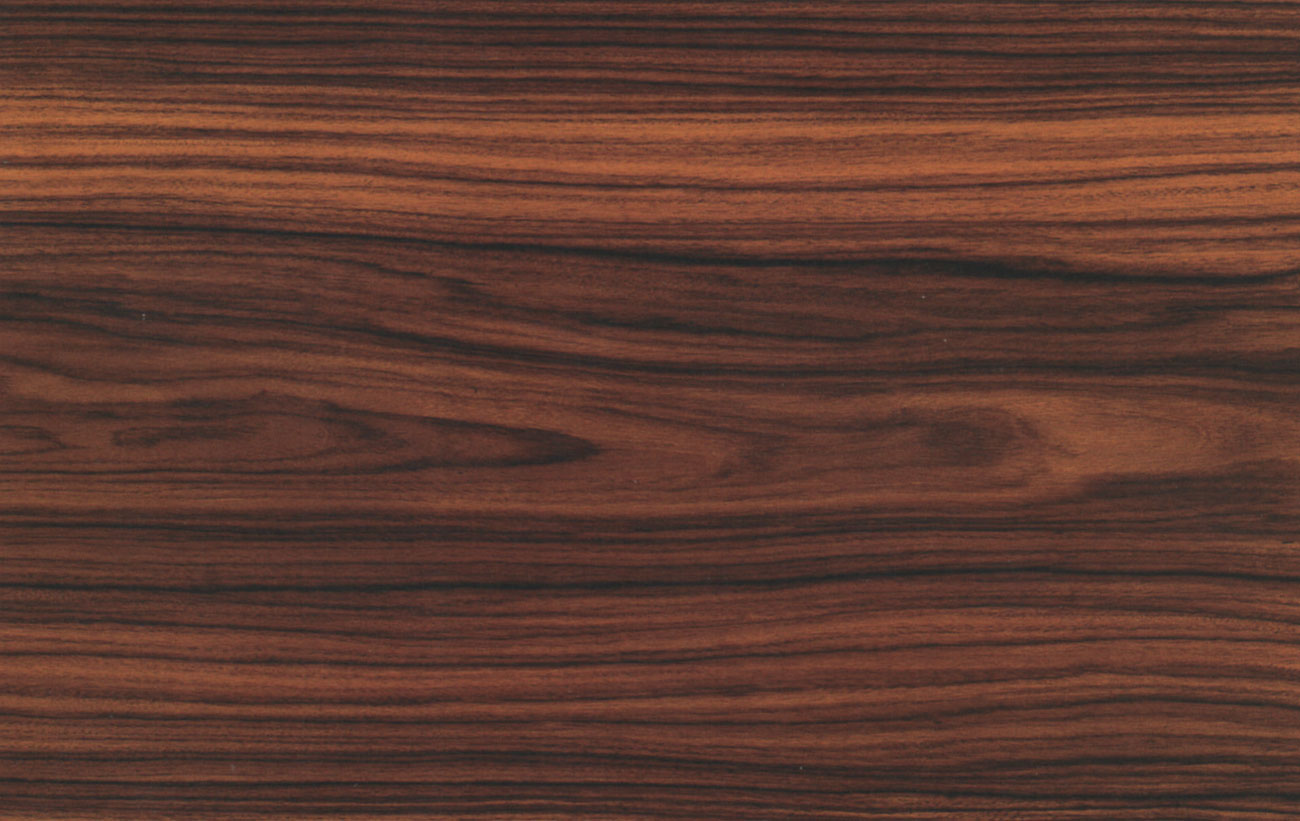Description:
The heartwood of Brazilian rosewood ranges in color from chocolate to violet-brown, and often has irregular black and golden-brown streaks. It is typically straight-grained, but can be wavy, and has a medium to coarse texture with a medium lustre. The wood has a gritty feel and is oily to the touch. Brazilian rosewood is a particularly beautiful wood, and much prized.
Typical dry weight: 53 lb/ft³ (850 kg/m³)
Specific gravity: .85
Properties:
The wood is rated high in all strength categories except stiffness, which is low. Consequently, it has a very good steam-bending rating. Due to its hardness it is a difficult wood to work, and has a severe blunting effect on cutters. Depending on the stock being used, planing, boring, moulding and mortising, turning and sanding, can range from being easy to difficult. Gluing can be tricky due to the density and oil content of the wood. Pre-boring is advised for nailing and screwing, and with care the wood can be brought to a high polish.
Seasoning:
Brazilian rosewood dries slowly and is sometimes prone to checking and splitting, but exhibits little degrade on kilning. It is very stable in use.
Durability:
The heartwood is very resistant to fungus and insect attack. Preservative treatment is not normally required because of the uses to which the wood is put.
Typical Uses:
As one of the world’s most prized woods, Brazilian rosewood is used for fine furniture and cabinetmaking, turnery, craving, sculpture, shop and bank fittings; musical instruments, including piano keys, classical guitar bodies and violin bows; shuttles and handles. It is also sliced for decorative figured veneers used in cabinetwork, marquetry and panelling.



 GO BACK
GO BACK